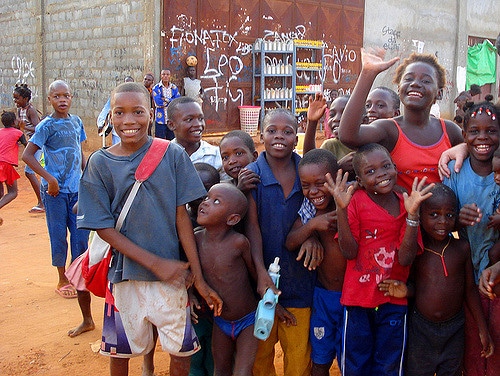Top 10 Facts About the Health Expectancy in Angola

Sometimes referred to as “healthy life expectancy” or HLE, health expectancy measures more than just the number of years a person remains alive. In fact, it is calculated by “adjusting total life expectancy for the number of years spent in poor health.” As the following list illustrates, there are many improvements yet to be made, but there is also good reason to be hopeful about the health expectancy in Angola.
Top 10 Facts About the Health Expectancy in Angola
- The average life expectancy in Angola is approximately 58 years for males and 62 years for women. However, these statistics leave many questions unanswered regarding the health expectancy of the country’s 13 million inhabitants. For example, in Angola, respiratory infections like pneumonia and bronchitis limit mobility and cause years of suffering before proving fatal.
- Improved access to clean water across Angolan villages reduces the threat of contracting diarrheal diseases, which is the leading cause of death in Angola. Thanks to a project called Angola Water Sanitation and Hygiene (WASH) — implemented in 2016 by World Vision International — the people in Angola’s Ukuma Municipality now have clean water and far fewer incidents of illness.
- The average health expectancy in Angola is dismally affected by the country’s high maternal mortality rate, with 600 out of every 100,000 births resulting in the death of the mother. This statistic is exacerbated by Angola’s high fertility rate of 5.8 births per woman. A woman with a difficult pregnancy or birth outcome, including preeclampsia, preterm labor and fetal growth impairment is more likely to have these issues recur with subsequent births. She is also more vulnerable to seemingly unrelated illnesses like cardiovascular disease.
- USAID is working with the Government of Angola to help develop a health care system that serves all citizens of Angola. This includes providing family planning services for Angolan women, implementing health education to empower women with knowledge about their bodies and conducting training for healthcare workers.
- In Angola, one in five children dies before reaching the age of five. The odds are worse for children in rural areas with limited access to healthcare facilities. The lives of these children are not only cut short by treatable diseases like malaria, but their few years on earth are filled with pain and suffering.
- With the President’s Malaria Initiative (PMI), USAID is addressing Angola’s fight against malaria. By providing insecticide-treated mosquito nets, preventative treatment of expectant mothers, accurate diagnosis and swift treatment, the goal is to reduce malaria in Angola by 50 percent.
- In 2018, the budgetary allocations for the health and education sectors were increased. This allowed an additional 20,000 teachers and 1,700 healthcare personnel to be hired.
- It is estimated that an entire generation of Angolans missed the chance to attend school due to the Angolan Civil War. A sense of normalcy is slowly returning to the educational system in Angola, though only four years of primary school are compulsory. This is an important component of the health expectancy in Angola because primary school students are taught the basics of hygiene and the importance of clean drinking water, along with other crucial facts for maintaining good health.
- Before the development of retroviral drugs, dying of AIDS was a protracted and usually excruciating process. This remained the case for Angolans suffering from AIDS as recently as 2004. Thanks to initiatives including the U.S. President’s Emergency Plan for AIDS Relief (PEPFAR), fewer Angolans are being infected with HIV/AIDS, and those who are living with the virus are receiving treatment in a more timely manner. This extends life expectancy and makes life with the syndrome more comfortable.
- UNICEF has played an enormous role in improving the health expectancy in Angola. A 2018 report listed notable accomplishments including 500 latrines being built, 39,352 children being screened for malnutrition and 1,000 healthcare workers being trained for cholera prevention. These efforts are ongoing, and with help from global partners, the outlook is bright.
The Angolan Civil War, which lasted from 1975 until 2002, devastated and impoverished the country. Lack of infrastructure, little to no healthcare services and a widespread lack of clean water were just some of the difficulties the nation faced as it struggled to regroup after the war. However, today, the Angolan government is playing a proactive role in continuing to improve the collective health expectancy in Angola.
– Raquel Ramos
Photo: Flickr
